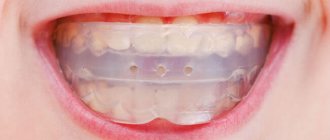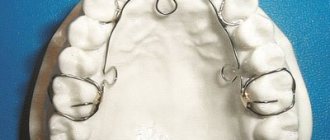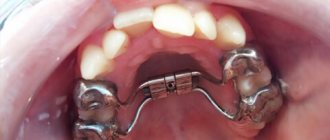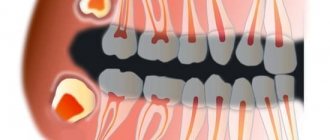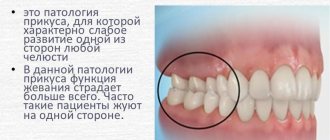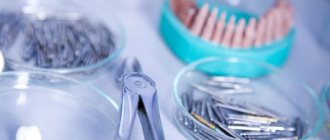Beautiful, straight teeth and a snow-white smile are a gift that nature does not bestow on everyone. Fortunately, today there are several effective techniques that can straighten teeth in childhood and provide a person with a luxurious smile for life. And the most popular way to improve their appearance is to install plates.
Today we will talk about what dental plates are, how long it will take to straighten a child’s teeth and how to choose the right smile helpers.
Plates for teeth: removable and non-removable
In dentistry, doctors work with different types of orthodontic products. At the initial appointment, the orthodontist will tell the young patient and his parents what the plates for straightening teeth are called, how they differ and what they are like. The most popular:
- systems – single-jawed, with a retraction arch, with a pusher, with a hand-shaped process;
- devices – Brückle, Frenkel;
- Andresen-Goipl activator.
Products are divided according to the method of fixation:
- removable – hypoallergenic polymer construction includes wire hooks and arcs for fixing the plate;
- non-removable – they look like metal brackets that put pressure on the teeth from the outside, forming the correct bite.
A removable dental plate is placed on children to correct simple bite defects. The optimal age of a child for correction is 5-12 years. Fixed products can compete in effectiveness with braces; they are usually recommended for teenagers to eliminate serious anomalies of the dentition.
Braces are non-removable orthodontic structures in which a plate is placed on each tooth, and an arch with a “memory effect” is responsible for correcting the bite. Metal braces are the most effective, but sapphire and ceramic braces are almost invisible on the teeth. There are also ligature braces with rubber bands and self-ligating ones, which reduce the treatment period by several months.
What is better: braces or plates?
You can choose dental plates or braces for a course of treatment only after an examination in the orthodontist’s office, following his recommendations. The structures influence the formation of the bite, but the mechanism of their action is different.
Dental plates
There is no lower age limit. They can be used in preschool age, when the child is already able to cooperate with the doctor. These are removable models.
The active element is arches that help the teeth take the correct position in the row. But the effect of the device on molars is limited. The design can prevent further bite deformation. Listen to your dentist's recommendations. Often, timely measures taken during a sensitive period help to avoid problems that will begin in a few years if there is no intervention.
In children, this orthodontic instrument allows you to change the width of the palate or restrain the development of pathological processes. It also prepares the jaw apparatus for the installation of braces in the future in case of a serious anomaly. In difficult cases, plates can be used until the molars appear, and then, in adolescence, braces need to be installed.
Braces
Any brace system is a non-removable structure. Installation and removal of braces is possible only in the office of an orthodontist. The system is capable of correcting complex combined malocclusions. Braces can be installed only from 11-13 years of age if most molars are present.
Properly installed braces:
- eliminate crowding of teeth,
- adjust the gaps between them,
- change the relative position of the jaws - stimulating or inhibiting their development.
When correcting complex anomalies, the child may need to wear a plate or retainer after braces to secure the result.
Adults and children
Dental plates are installed for children with milk units. During this period, the baby’s bite is formed, and the teeth are gradually replaced by permanent ones. Sometimes minor defects begin to progress and timely actions of the orthodontist will prevent the problem or prepare the jaw apparatus for gentle treatment. Dental plates are not used to change the bite of adults. This orthodontic instrument is needed to maintain results after wearing braces.
Does a plate straighten teeth: indications
Children are prescribed plates for the lower teeth and expansion plates for the upper and lower teeth only after a thorough diagnosis. Based on X-ray and panoramic photographs, measurements and study of proportions, the orthodontist decides to place a plate on the child’s teeth.
Treatment is indicated for:
- minor and serious anomalies of dental bite;
- violation of the tone of individual muscles;
- pathologies of tooth growth in the upper or lower jaws;
- incorrect position of incisors and canines;
- disproportionate growth and development of the dentofacial rows.
Orthodontic removable appliances equalize the growth rate of the jaw bones, straighten teeth in given planes, and correct the closure of the jaws.
Why does discomfort occur?
This orthodontic device is made individually based on a cast of the dental arch and palate, which allows it to accurately replicate the anatomical characteristics of a person. This technology is necessary to ensure that the patient experiences minimal discomfort during orthodontic treatment. Despite this, in the first days a whole list of unpleasant sensations often arises. To understand what causes it, you need to know the structure of the plate.
Its base is made of inert plastic, which fits closely to the hard palate of the lower or upper jaw. The base is not very thick, but even these few millimeters are enough to place the tongue inside the oral cavity in an unusual position. Even at rest, the new position does not correspond to the usual one. If special expanders are installed in the palatal part, the lack of space becomes even more pronounced.
The second element of the system are metal hooks and staples. They pass from the inside to the vestibular part of the teeth. The inner part of the lips and the mucous membrane in this area are penetrated by a large number of sensitive cells, and its hyperstimulation by new elements causes discomfort.
What do children's dental plates look like?
A plate made in a pediatric dental laboratory is a standard of aesthetic perfection. Any shades, gradient colors, sparkles and bright decorations inside translucent plastic - children are delighted when they see it for the first time.
Structurally, the plate is:
- the base is strong and quite rigid;
- elastic wire - fasteners, arches and hooks are made from it, and it is this wire that provides the necessary pressure to correct the bite;
- the screw is an activator responsible for pressure and intensity of impact.
The screw is tightened by the doctor with a special key, or this is done by the parents according to the correction plan drawn up.
Soldatenkova Alina
I am often asked how dental plaques are made for children. First, we take impressions of the teeth – it doesn’t hurt, but sometimes it’s a little unpleasant. Then, based on the impressions, the appliance prescribed by the orthodontist is manufactured in a dental laboratory. Then try it on and create a design that is comfortable to wear. And issuing a plate to the patient with recommendations for wearing
Plate care
Plates for teeth straightening, unlike braces, do not require special care. You don't need to buy any special tools for them. It is enough to remove such a structure during cleaning and also clean it separately. To do this, you can use a regular toothbrush and toothpaste. It is important to do this carefully so as not to damage the parts or change the tension of the screw.
If the patient wears a permanent structure, it should also be cleaned during oral hygiene. You can also use an additional rinse to get rid of bacteria in the spaces between the plate and the teeth.
To extend the life of the structure, it is not recommended to eat too hard foods, such as nuts, without first removing the structure from your mouth. It is also better not to drink very hot drinks or eat sweets with dyes. In this case, stains may appear on the dental plate.
How to wear dental plates - recommendations for children and parents
Whether dental plates help is the main concern of parents. Much depends on how correctly the young patient wears the orthodontic apparatus.
The main requirements for wearing orthodontic plates:
- duration – up to 20-22 hours daily;
- care - morning and evening cleansing with pastes, gels, weekly deep cleansing in a special solution;
- remove the product when eating;
- Do not play with the orthodontic appliance - remove it and return it to its place in the mouth with your tongue.
The doctor will show you how to put the plate on your teeth at your appointment, but there is nothing complicated about it. Metal arches fix the structure, and the regulatory elements are responsible for gentle correction of the bite while wearing.
It happens that a child takes the product out of his mouth, and then cannot figure out how to put the plate on his teeth - it either falls off or does not fit into place. Such a circumstance may be preceded by the following events:
- the device was in the mouth for less than 12-14 hours a day, and the fixation was broken;
- supporting units have been removed or fallen out – the structure requires orthodontic correction;
- a tooth erupts under the polymer part of the system and prevents it from taking the correct position;
- the plate was not worn for several days in a row - the bite has returned to its original position and you need to see a doctor to adjust the device;
- violation of medical recommendations for wearing removable plates - it is worth coming to an appointment and checking the condition of the product.
Types of plates for teeth
Plates for teeth are divided into two main types:
- removable;
- permanent.
The differences lie in the specifics of wearing the plates. Removable structures can be removed at any convenient time when the patient needs it. For example, for more comfortable chewing of hard food or self-tightening of the adjusting screw. However, dentists do not recommend doing this too often, since the effect of such treatment may be minimal. It is especially important to leave the dental guard in your mouth while you sleep. In general, the period of wearing the structure should be at least 22-23 hours a day.
As for permanent ones, they are installed and removed exclusively by a specialist. Such devices are used for more serious dental defects. They are also often prescribed to young children, who may not listen to the doctor’s recommendations and independently remove the plate for a long time, for example, to go to school.
Until what age can teeth be straightened with a plate?
Until what age do plates be placed on teeth is a question to be decided on an individual basis. Some devices work best during the period of active changes in occlusion, so they are recommended to be worn until 10-11 years of age. Other products perform well until the teeth completely change - up to 12-14 years. But the doctor assesses the situation more fully.
Often, orthodontists use a combined treatment method - changing devices, selecting new ones for the current situation. That is why it is not always necessary to delve into the names of plates for straightening teeth. The result is important, not what the dental plates are called.
It is difficult to answer how long a plate is worn on the teeth. Some patients require full-time braces and additional treatment with braces at age 14. For others, the situation improves in 1-2 years.
During an orthodontic consultation at Aza&Buka, patients will receive complete information about the treatment. The doctor will not just show a photo of an orthodontic children’s dental plate, but will also conduct an initial diagnosis, tell you the features of the planned correction, the approximate duration of treatment, and prospects. While the adults are talking, children can get acquainted with the variety of orthodontic devices - choose the color of the plate for the teeth and the design.
How to speed up the addiction process
To get used to it as quickly as possible, you need to strive to wear the plate as long as possible, without giving in to the urge to remove it. In this case, the habit will develop much earlier. Many questions are related to how to get children not to remove the system at the time of addiction. This is very important, since constant filming can not only lengthen the adaptation process, but also completely eliminate all efforts.
For young children, it is recommended to make bright colored plates that the child may like with their appearance. Parents can come up with a fairy tale about this bright little thing that will interest the baby and make him warm up to it.
You need to be frank with teenagers and explain how important it is not to remove the plate and what results can be obtained at the end of the orthodontic course. If necessary, you can show before and after photos, since a visual example works much better than any words.
Indications for use
It is recommended to install leveling devices in order to:
- adjust the width of the sky;
- prevent further displacement;
- change the shape of the jaw bones;
- keep the units in the correct position;
- stimulate or, conversely, stop jaw growth.
You can understand that there are orthodontic problems by the following signs:
- molars, incisors or canines are crooked, located at an incorrect angle, protrude in front of their neighbors or are located behind them;
- the lower jaw protrudes strongly forward;
- rows do not close correctly;
- the upper lip protrudes.
Varieties
Since correcting a bite in childhood is not a very difficult task, doctors strongly recommend not delaying a visit to an orthodontist. Until the situation reaches a critical point, a plate can help correct the position of the dentition. Today there are several types of them.
Fixed
Their main purpose is to straighten the teeth from the outside in the shortest possible time. The entire system is a structure consisting of small locks into which strong power arcs made of metal are inserted. It is only necessary to occasionally adjust the tension of the arc, and the result will not be long in coming.
Main advantages:
- Such records are practically invisible to others when communicating.
- Caring for them is very easy and simple, it does not take much time.
- Installing the plates is not painful; anesthesia and anesthesia are not required.
- Efficiency and fairly short term of bite correction.
- Hypoallergenic and safe all materials used.
- Parents do not need to constantly monitor their child’s wearing of the plate, because he cannot remove it.
Like any treatment method, bite correction using plates has several disadvantages:
- They are practically powerless in case of severe deformations and in the presence of individual characteristics of the body.
- Since the system blocks the taste buds, the child may complain of a lack of perception of different tastes.
- Diction may deteriorate and a lisp may appear.
- It takes time to adapt.
Removable
Such orthodontic structures are made strictly according to the individual parameters of the jaw of each individual child. Only a professional doctor can decide which units of the row to attach the fixing elements to.
Removable plates can only help cope with minor bite pathologies and the presence of small gaps.
